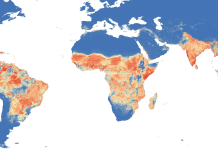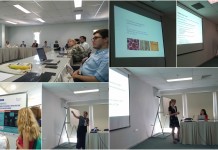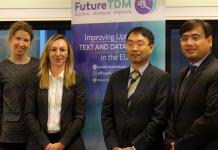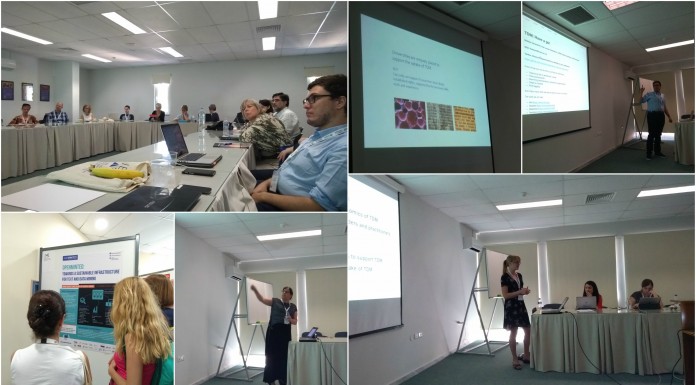FutureTDM aims to address two major issues that hinder the uptake of TDM at a European wide level: a) the rather limiting legal framework that is closely interconnected to policy development, and b) the lack of awareness on existing or potential mechanisms and how these can advance responsible science and speed up innovation.
The expected impacts of FutureTDM can be grouped into the following major categories that all contribute to the adoption of TDM in the European Union:
Remove existing legal, technological and skill barriers that prevent TDM technology from being adopted within the EU
Recent European studies on TDM have touched upon legal barriers obstructing its wider adoption, but it still remains to be seen how the actual relevant EU primary and secondary legislation, as well as relevant case law in the areas of interest, can be “translated” in comprehendible and effective European-wide policies that provide possible alternatives and solutions to the current situation. The reports on the legal environment in the EU and the policy recommendation/roadmap, combined with a targeted dissemination campaign, will address this issue, and will provide solid and viable tools for policy makers of whole Europe to determine on how the situation can be changed on the intermediate- and long-term in order to reduce the backlog of TDM adoption and potentially turn the EU into a place where TDM is only accountable to the technical challenges, which in turn may only incentivize innovation. Furthermore, this platform is envisioned as a central point of information (Knowledge Information Hub), which will leverage TDM by providing comprehensive, linked and contextualized knowledge. By gathering, curating and providing a comprehensive collection of existing research, use cases, studies, best practices, success stories other material within the TDM domain application across Europe, FutureTDM will facilitate a cross-fertilization environment that moves across domains, disciplines or geographical borders.
Increase awareness about the social, economic and scientific benefits of TDM.
TDM is in itself an innovative process, which has the potential to deliver significant productivity gains, most notably in the conduct of any type of research. However, the potential of TDM for supporting wider innovation in the economy is even greater, even though clearly measurable with the current practices. As stated in the 2012 Jisc report[1], when considering how TDM could generate value or support innovation it needs to be viewed: a) in the context of the research base in which it could be embedded, and b) in the potential for new cutting edge services and business models that could be in demand globally and could drive business. As TDM and related technologies are rather new and not easy to grasp when not having them employed already in one form or another, its adoption happens at a slow pace by nature. Nevertheless, as the pace is even slower in Europe than in other developed regions, FutureTDM provides some countermeasures in order to change that. In particular, FutureTDM’s multi-faceted, bottom-up community-driven awareness approach will convey important messages that help spread the word in the scientific world and additionally help to put pressure on policy-makers and content providers with beneficial impacts to its various stakeholders from an economic and scientific point of view:
Increase the Union’s competitiveness with other high-tech economies (like Japan, South Korea, US) by enhancing TDM adoption.
FutureTDM does not solely address the actual adoption and conduct of TDM within projects, but facilitates the provision of an environment where the technology can perk up and is relieved from limiting factors. As other regions obviously provide an environment where TDM can be exploited right away without any major legal obstacles and even within the EU some countries move into the same direction (e.g. UK through its recent TDM policy update on scientific publications) by enacting permissive exceptions from copyright law, there surely is plenty of room for improvement available. Obviously, a thorough and holistic analysis of different ecosystems, not only necessarily only from regions superior to Europe regarding the adoption of TDM, will yield valuable inputs for this achievement. The results of a comparative view on international policies, including detailed analyses, will represent a good basis for decision making of the various policy makers involved.
Foster the adoption of TDM in science and economy.
Fostering the adoption of TDM can only be achieved by a combination of paving the legal environment on the one hand and facilitating the actual conduct of TDM projects on the other hand. A part from the measures above mentioned, pointing out success stories and statistics of usage in different fields and regions might also be of great use in this context, as it could turn out to enhance the concernment of falling behind, especially when involving other areas of the world where TDM is employed already. In brief, FutureTDM’s awareness measures will effectively lead to a transfer of knowledge and practices on the technological, legal, policy, organizational and infrastructural level among various communities, resulting to a more multi-disciplinary approach in science and humanities. The goal of lowering the legal barriers and the aim for a European-wide policy will provide researchers and industry with the freedom to devote on technological aspects which ultimately lead to innovation with potentially massive economic and societal benefits, as indicated in the recent public reports on TDM.
Lead to Research & Innovation policy that is more relevant and responsive to society
Understanding the policy framework is a crucial, underlying aspect of FutureTDM’s activities. TDM and e-infrastructures are constituent components of the broader set of EU-wide e-infrastructures. As such, a European-wide policy framework comprises of elements that serve specific TDM objectives as well as broader objectives related to e-content, e-research and big and open data policies, as these are responding to societal needs. It is important to note that there are at least four large policy areas: open/ big data policies that are mostly related to Public Sector Bodies (PSBs) content, eResearch/ eInfrastructures that are mostly related to research content (both published and gray), eCulture and Creative content and TDM related content, the latter category could be inclusive of partially inclusive of all the aforementioned ones. FutureTDM’s consortium members are able to guarantee an outreach to all different policy areas above and put their concentrated effort in identifying, aligning and promoting the different types of policies related with different domains of action, that relate to different areas of data and content (e.g. OKFN and SYNYO to Public Sector Information, LIBER, BL and ARC to OpenAIRE, Europeana and DARIAH)











